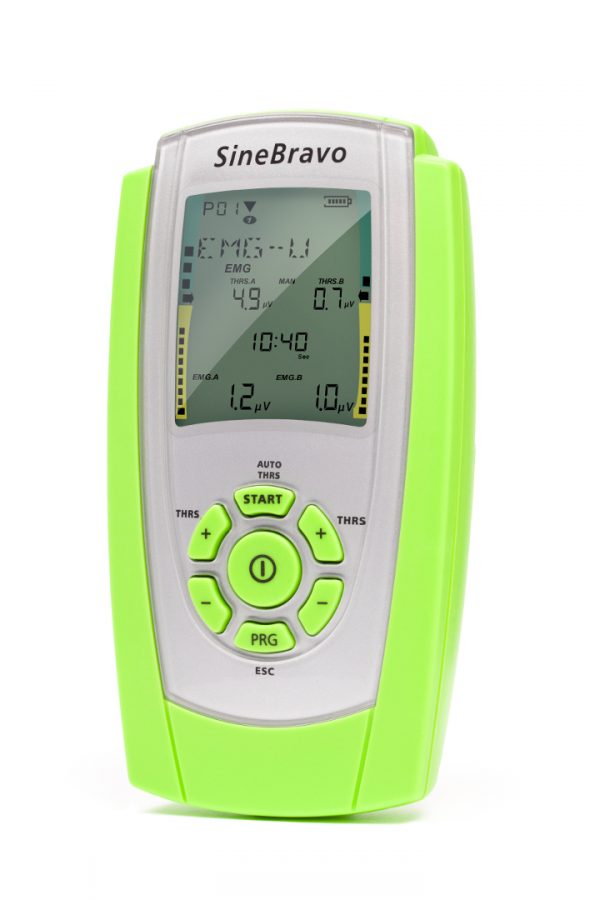The body’s own inner regulatory processes are often not directly accessible to brain, so imbalances can occur. Biofeedback monitors changes of biological processes that are not directly accessible to the brain are made accessible with technical (often electronic) auxiliaries. This is generally done by sounds (volume, pitch or timbre) or visualizations (e.g. pointer or bar graphs). The possible applications of this treatment are many. It is frequently used for relaxation and for rehabilitation (e.g. of paralyzed muscles).
Any movement is detected by biofeedback devices, as the brain transmits electrical action potentials via nerve fibers to the muscles that are necessary for this movement. These bioelectrical signals (EMG = ElectroMyoGraphy) can be measured by electrodes, then amplified, filtered, and made accessible to humans with the help of the device. The device gives a visual and/or auditory feedback of the persons efforts. Even if the intention to exercise and the subsequent physical exertion result no visible movement, the increase in muscle tension is registered by the device and communicated to the user. The possibly resulting adaptation of behaviour uses the principle of “trial and error” until a behavior has emerged that produces the desired results. By the frequent repetition of this behaviour that triggers the best signals, an improvement of health is often achieved.


